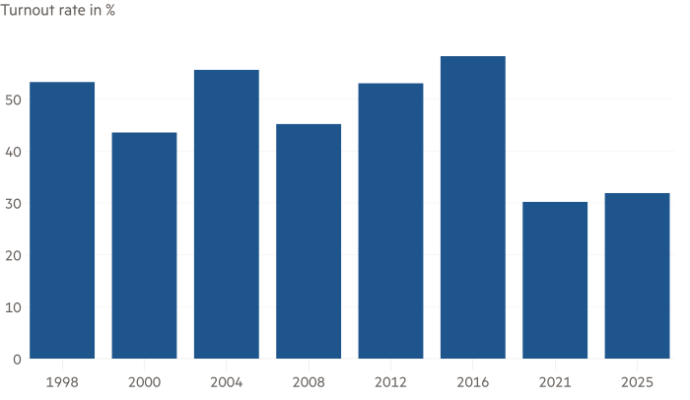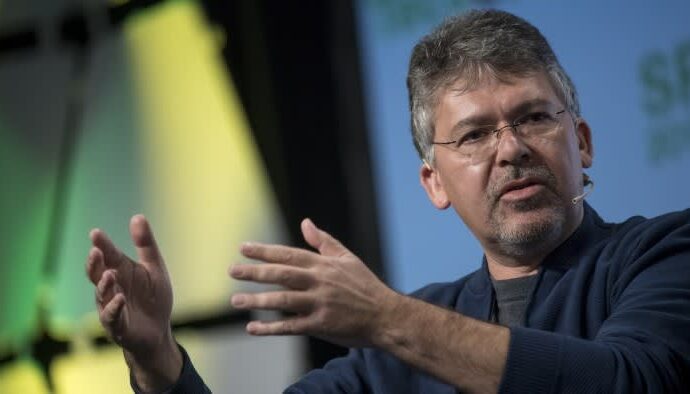CHINA’S NUCLEAR arsenal is piddling by American or Russian standards. The country has scarcely 200 warheads, reckons America’s Department of Defence, and perhaps 100 or so inter-continental ballistic missiles (ICBMs). Until last week it had only 16 known silos for latest-generation ICBMs. So eyebrows were raised when satellite imagery revealed 120 new ones being built in the desert of Gansu province, in western China.
The silos, near the city of Yumen, were identified by researchers from the James Martin Centre for Nonproliferation Studies, an American think-tank, whose findings were published on June 30th in the Washington Post. These and other experts reckon that the structures are designed to house China’s newest ICBM, the DF-41, which can reach almost all of America’s mainland. The question is why so many are needed.

One theory is that they could allow China to play a “shell game”—an old conjuring trick in which a ball is placed under one of three cups, which are then shuffled. China fears that, in a crisis, America’s large and precise arsenal could wipe out China’s meagre nuclear forces. Any Chinese missiles that are still able to be launched after such an onslaught could be destroyed by American missile defences. But if China’s missiles could be moved underground between silos, America may not know which ones to strike.
America’s abandoned “MX” programme of the 1970s and 1980s could have inspired such a scheme. The idea of this was to shuffle 200 missiles among almost 5,000 bunkers in Utah and Nevada. The layout of the Chinese shelters may suggest a similar aim, says James Acton of the Carnegie Endowment, a think-tank in Washington. He points out that whereas China’s older silos, in Jilantai in the neighbouring province of Inner Mongolia, are tens of kilometres apart, the ones in Gansu are just 3km apart. Yet not everyone is convinced that China is merely planning a shell game. The problem is that 120 new silos could also support the deployment of 120 new missiles—and, in theory, several hundred new warheads, since each missile can carry more than one.
American military officials have been arguing for some time that China is dramatically expanding its nuclear forces. In its most recent annual report on Chinese military power, the Pentagon said that China’s warhead stockpile was “projected to at least double in size” over the next decade. America’s State Department says that the silo discovery is “concerning” and “raises questions” about China’s intent. “I’m afraid the shell-game theory is based on a strong hope that China is keeping a minimum deterrent,” says Rebeccah Heinrichs of the Hudson Institute, another think-tank. “I don’t share that hope and think it’s actually pretty dangerous to hold on to it.”
The discovery of the silos raises two broader questions. One is whether they would enable China to respond more quickly to a suspected nuclear attack. Silo-based ICBMs can be launched more rapidly than ones carried on mobile launchers, which first have to be erected and, in some cases, fuelled. Some American officials argue that with plenty of instantly ready missiles to hand, and with suitable early-warning radar that China is beginning to develop, the country may adopt a posture of “launch on warning”, meaning it would fire its missiles at the first sign of a nuclear strike.
The other question is whether this will affect nuclear-arms control. The last remaining pact between America and Russia, the New START treaty, was renewed in February and will expire in five years. Although both countries have several times more warheads than China, the Biden administration wants China to open talks about its own arsenal. If the White House sees the new silos as confirmation of a rapid nuclear expansion, it may adopt the former Trump administration’s view that any future arms-control measures must involve all three powers.
Ironically, the most benign interpretation of the silos—as a shell-game—is in one sense the least encouraging one for arms control. America and Russia verify New START by peering into one another’s silos. If China’s plan is indeed to shuffle missiles between silos, it would become much harder for others to be certain of its deployments. “So the best case,” says James Cameron of the University of Oslo, “is that China has gone some way to confirming how uninterested in arms control it is.”
The Economist


